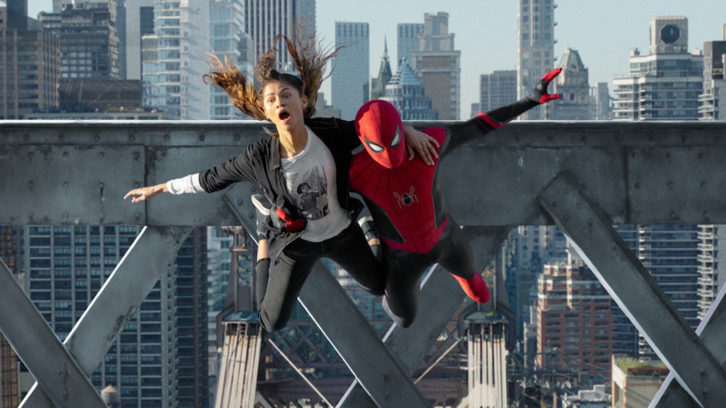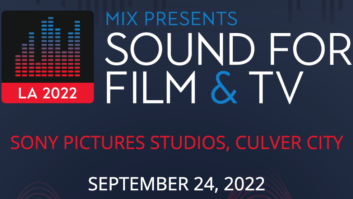
Culver City, CA (January 28, 2022)—The sound team for Sony Pictures’ Spider-Man: No Way Home was tasked with creating a soundtrack to support a story of unusual complexity and emotional depth.
The film’s production sound mixer was two-time Academy Award-winner Willie D. Burton, while the post-production sound team, based at Sony Pictures Post Production Services, was led by supervising sound editor Steven Ticknor, supervising sound editor Vanessa Lapato, re-recording mixer Kevin O’Connell and re-recording mixer/sound designer Tony Lamberti. Sound editorial began in April of 2021 and spanned six months. The project moved to pre-dubbing in September and concluded with six-weeks of final mixing in the 344-seat Cary Grant Theater at Sony Pictures.
Throughout, the team worked under the guidance of director Jon Watts and in close collaboration with picture editors Leigh Folsom Boyd and Jeffrey Ford, the film’s visual effects team, and composer Michael Giacchino. Watts reportedly had high expectations for the film’s sound. “Jon wanted to stay true to the sound of earlier Spider-Man films, but step it up a notch,” recalls Ticknor, who also served as supervising sound editor on Spider-Man: Far from Home and Spider-Man: Homecoming.
Catch Mix Sound For Film: Awards Season On Demand for FREE
“For Green Goblin’s glider,” Ticknor continues, “we retrieved sound from the original effect produced 20 years ago. Using modern tools, we restored those sounds and transformed them into something new that retained their original character but more sophisticated and dynamic. We did something similar with web sounds from the Spider-Man films Andrew Garfield starred in, and with the effects for Dr. Octopus and Electro.”
It was essential for certain signature sounds, produced by post-production sound editors, to be consistent with other Marvel films. Lamberti cites the film’s Mirror Dimension sequence, where Doctor Strange pulls Tom Holland’s Peter Parker into a distorted, alternate version of New York City. “We studied how that same effect was used in the 2016 film Doctor Strange and expanded on it to a great degree,” Lamberti explains. “We took advantage of the Atmos format to add time delay to aspects of the sound and draw the audience in. The sequence also presented opportunities to create unique effects, like a special horn for the train that passes through a Grand Canyon-like environment. The whole sequence has rich, new sonic dimension.”
Many of the film’s CGI action scenes required dialogue recorded on ADR stages. That work was complicated by the schedules of the actors and Covid restrictions, which evolved over the course of post-production. “Actors were recorded remotely at studios in Southern California, the UK, Canada and other locations around the world, with Jon Watts directing their performances via Zoom,” recalls Lapato. “It was a challenge for the actors and the director, and it required a sound crew that was fast, flexible and open to last minute changes.”
O’Connell notes that the story goes through many emotional highs and lows. “Some of the film’s most poignant scenes are quiet,” he says. “Jon Watts wanted to use production dialogue whenever possible to preserve the spontaneity and emotion of the actors’ performances. We used every tool in the toolbox to reduce background noise, while keeping the dialogue intelligible, fresh and warm.”







